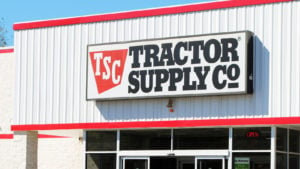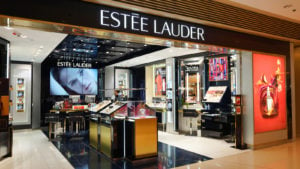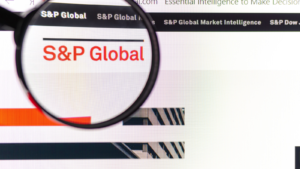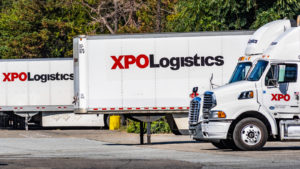The markets are down significantly in 2022. This makes looking for the best stocks to buy now akin to finding a needle in a haystack. There are so many possibilities; it’s hard to pick just seven.
Alas, that’s my goal for this article, so that’s what I’m going to do.
I’ll start the selection process with the S&P Composite 1500 — A combination of the S&P 500, S&P MidCap 400, and S&P SmallCap 600 — and remove companies that analysts don’t favor. This means an average rating of hold or worse.
I’ll discard four of the 11 sectors in the S&P 1500: Materials, Real Estate, Technology, and Utilities. I chose the seven sectors based on alphabetical order. I don’t have anything against these other four sectors.
Lastly, for valuation purposes, I’ll select those companies with healthy returns on invested capital and earnings yields based on their respective sectors.
Based on these three criteria, I’ve come up with my list of the seven best stocks to buy now.
Best Stocks to Buy: Alphabet (GOOG, GOOGL)

The 48 analysts that cover Alphabet (NASDAQ:GOOG, NASDAQ:GOOGL) give it an average buy rating with a median target price of $140. Its return on invested capital is 25.80%, while its earnings yield is 5.39%, almost half its five-year average.
After an eight-month search, YouTube has appointed Leo Olebe as its head of gaming. Olebe was most recently Google Play’s head of games partnerships. Olebe brings more than 20 years of experience in the gaming industry.
Gaming is a big part of the YouTube experience. In the second quarter of 2022, YouTube Gaming generated 1.13 billion hours of content watched. YouTube generated more than $28 billion in revenue for Alphabet in 2021. That’s up from $1.3 billion a decade ago. Since YouTube launched YouTube Premium in 2018, it’s grown its annual subscribers fivefold to 50 million in 2021.
Hiring Olebe should keep YouTube on the path to more significant revenues and profits. Estimates put YouTube’s value as a separate company as high as $300 billion.
Tractor Supply (TSCO)

The 32 analysts that cover Tractor Supply (NASDAQ:TSCO) give it an average overweight rating with a median target price of $232. Its return on invested capital is 18.40%, while its earnings yield is 4.61%.
The specialty retailer reported third-quarter 2022 results on Oct. 20. It missed the analyst estimate for revenue of $3.29 billion in the quarter by $20 million. On the bottom line, its earnings per share were $2.10, three cents higher than the consensus.
“Tractor Supply delivered another record quarter as we continued to gain market share and extended our trend of consistent and stable net sales and earnings growth,” stated CEO Hal Lawton in its Q3 2022 press release.
Just days ago, Tractor Supply got approval from the Federal Trade Commission (FTC) to acquire Orscheln Farm and Home for $320 million. Tractor Supply is taking 81 of the family-owned specialty retailer’s locations.
The other 85 have been sold to two buyers for $72 million. In addition, it is selling Orsheln’s corporate headquarters and distribution center to one of the buyers of the discarded stores for $10 million. Tractor Supply will ultimately pay $238 million or $2.94 million per store.
TSCO continues to be one of the best growth stories in retail.
Best Stocks to Buy: Estee Lauder (EL)

The 27 analysts that cover Estee Lauder (NYSE:EL) give it an average overweight rating with a median target price of $289. Its return on invested capital is 18.24%, while its earnings yield is 3.16%, the highest since 2016.
Estee Lauder remains one of the best long-term holds in the consumer discretionary sector. I’ve liked it for years. I first recommended the stock to InvestorPlace readers in November 2012. I suggested that every time the stock approaches $50 on the downside, investors should be buying.
From my November 2012 article to the stock’s all-time high of $374.20 hit in January this year, EL stock gained 545%. Despite losing nearly 44% year-to-date, it’s still gained a bunch over the past decade.
$200 is my new $50.
In September, Goldman Sachs analyst Jason English upgraded Estee Lauder to a “buy” from “neutral” with a $303 price target.
“[Estee Lauder] is arguably emerging from Covid as a stronger business than when it entered the pandemic,” Barron’s reported the analyst’s comments.
I couldn’t agree more.
Diamondback Energy (FANG)

The 33 analysts that cover Diamondback Energy (NASDAQ:FANG) give it an average Buy rating with a median target price of $169. Its return on invested capital is 21.30%, while its earnings yield is 14.75%, the highest in the past decade.
Diamondback is one of the biggest Independent oil and natural gas companies operating in the Permian Basin in West Texas. It is on a roll both operationally and in the markets.
On Oct. 11, the company announced it would buy Firebird Energy LLC for $1.6 billion in cash ($775 million) and stock (5.86 million shares). Firebird has more than 350 locations adjacent to Diamondback’s holdings in Midland, Texas. The purchase adds more than a decade of oil inventory.
Firebird’s properties generate 22,000 barrels of oil equivalent per day. It’s expected to increase by nearly 3,000 barrels in 2023 — all of this production from just one rig.
It generated $1.3 billion in free cash flow (FCF) in Q2 2022 and $2.8 billion for the trailing 12 months. In Q3, it plans to distribute 75% of its free cash flow to shareholders through dividends and share repurchases.
FANG Stock is up nearly 33% YTD.
Best Stocks to Buy: S&P Global (SPGI)

The 22 analysts that cover S&P Global (NYSE:SPGI) give it an average buy rating with a median target price of $385. Its return on invested capital is 13.50%, while its earnings yield is 4.47%, almost 40% of its five-year average.
S&P Global reports its Q3 2022 earnings on Oct. 27. Its results aren’t expected to blow the doors off expectations. William Blair analyst Andrew Nicholas cut his estimate for SPGI’s quarterly earnings by seven cents on Oct. 20 to $2.80 a share.
Nicholas sees the company’s full-year earnings at $11.35 and $13.76 in 2023. It’s trading at 21.2x its 2023 earnings. That’s well below its five-year average of 26.6x forward earnings.
S&P Global’s revenue declined 5% in the second quarter 5% to $2.97 billion. Its operating profit dropped 10% to $1.40 billion. However, excluding its Ratings business, revenues and operating profits increased by 6.6% and 12.2%, respectively.
When there’s not a lot of investment banking and initial public offerings (IPOs), S&P Global’s Ratings business doesn’t have much to do. As soon as IPOs return, so too will the segment’s growth.
Now is the time to take advantage of a weak merger and acquisitions (M&A) market.
Buy SPGI.
HCA Healthcare (HCA)

The 26 analysts that cover HCA Healthcare (NYSE:HCA) give it an average buy rating with a median target price of $240. Its return on invested capital is 17.39%, while its earnings yield is 9.90%. It was last this high in 2012.
Earlier this month, HCA agreed to sell three New Orleans-area hospitals to LCMC Health for $150 million. The deal, expected to close by the end of the year, seems to be a win/win for both hospital operators.
For the country’s largest hospital owner, the sale of the three hospitals is part of its recycling of assets. In 2021, it sold 50 home health locations and five hospitals. It has one hospital left in Louisiana. That will likely be sold soon enough.
HCA finished the second quarter with 182 hospitals, down from 187 a year ago. It also had 126 freestanding outpatient surgery centers, up from 122 in Q2 2021. It’s a revenue-generating machine with $14.82 billion in Q2 2022, 2.7% higher than a year ago.
Despite higher costs, it still made $1.76 billion in pre-tax profits in the quarter, a pre-tax margin of nearly 12%. Its net margin in the trailing 12 months was 10.83%. Grocery store chains like Kroger (NYSE:KR) would kill for margins this high. Its net margin over the trailing 12 months was 1.68%, almost one-seventh as high as HCA.
It’s an excellent long-term play.
Best Stocks to Buy: XPO Logistics (XPO)

The 25 analysts that cover XPO Logistics (NYSE:XPO) give it an average buy rating with a median target price of $71. Its return on invested capital is 10.06%, while its earnings yield is 14.83%, easily its highest in the past decade.
XPO CEO Brad Jacobs is a legend in the trucking industry. He’s also got a good sense of humor. Jacobs appeared in a Yahoo Finance interview recently, where he talked about his company’s spinoff of its automated freight brokerage business and his next big challenge.
On Oct. 17 Bloomberg contributor Thomas Black had this to say about the billionaire:
“The billionaire chief executive officer of XPO Logistics Inc. is hunting for a new industry in which to invest after spending just more than a decade building a company that jumped in market value to about $10 billion from about $160 million. He’s now splitting XPO into three parts and, for the most part, exiting the business”
At the same time Jacobs looks for his next adventure, he’ll remain Chairman of XPO, GXO Logistics, which it spun off in 2021, and RXO, which will get spun off in the next month.
Most everything Jacobs touches turns to gold. XPO has a lot to do with him getting this reputation. I expect it to continue to perform over the long haul.
On the date of publication, Will Ashworth did not have (either directly or indirectly) any positions in the securities mentioned in this article. The opinions expressed in this article are those of the writer, subject to the InvestorPlace.com Publishing Guidelines.
